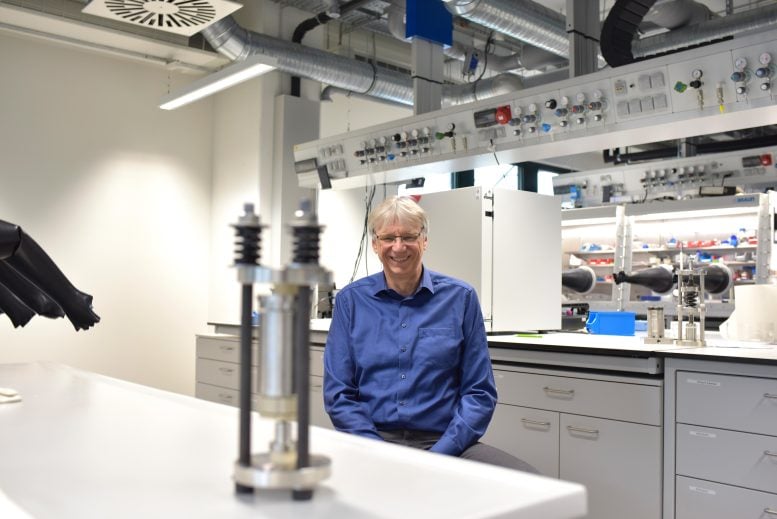
Researchers at TUM have developed a new material for solid-state batteries.
Solid-state batteries are seen as a game-changer for the future of energy storage. They can hold more power and are safer because they don’t rely on flammable materials like today’s lithium-ion batteries. Now, researchers at the Technical University of Munich (TUM) and TUMint.Energy Research have made a major breakthrough that could bring this future closer.
They have created a new material made from lithium, antimony, and a small amount of scandium. This material allows lithium ions to move more than 30 percent faster than any known alternative. That means record-breaking conductivity, which could lead to faster charging and more efficient batteries.
Led by Professor Thomas F. Fässler, the team discovered that swapping some of the lithium atoms for scandium atoms changes the structure of the material. This creates specific gaps, so-called vacancies, in the crystal lattice of the conductor material. These gaps help the lithium ions to move more easily and faster, resulting in a new world record for ion conductivity.
Challenges in Measurement and Validation
Since the measured conductivity far exceeded that of existing materials, the team collaborated with the Chair of Technical Electrochemistry under Prof. Hubert Gasteiger at TUM to confirm the result. Co-author Tobias Kutsch who conducted the validation tests, commented: “Because the material also conducts electricity, it presented a special challenge, and we had to adapt our measurement methods accordingly.”

Fässler sees great potential for the new material: “Our result currently represents a significant advance in basic research. By incorporating small amounts of scandium, we have uncovered a new principle that could prove to be a blueprint for other elemental combinations. While many tests are still needed before the material can be used in battery cells, we are optimistic. Materials that conduct both ions and electrons are particularly well suited as additives in electrodes. Because of the promising practical applications, we’ve already filed a patent for our development.” In addition to its faster conductivity, the material also offers thermal stability and can be produced using well-established chemical methods.
The researchers have even discovered an entirely new class of substances through their work, as first author Jingwen Jiang, a scientist at TUMint.Energy Research, emphasizes: “Our combination consists of lithium-antimony, but the same concept can easily be applied to lithium-phosphorus systems. While the previous record holder relied on lithium-sulphur and required five additional elements for optimization, we only need Scandium as an additional component. We believe that our discovery could have broader implications for enhancing conductivity in a wide range of other materials.”
Reference: “Scandium Induced Structural Disorder and Vacancy Engineering in Li3Sb – Superior Ionic Conductivity in Li3−3xScxSb” by Jingwen Jiang, Tobias Kutsch, Wilhelm Klein, Manuel Botta, Anatoliy Senyshyn, Robert J. Spranger, Volodymyr Baran, Leo van Wüllen, Hubert A. Gasteiger and Thomas F. Fässler, 28 April 2025, Advanced Energy Materials.
DOI: 10.1002/aenm.202500683
Never miss a breakthrough: Join the SciTechDaily newsletter.
